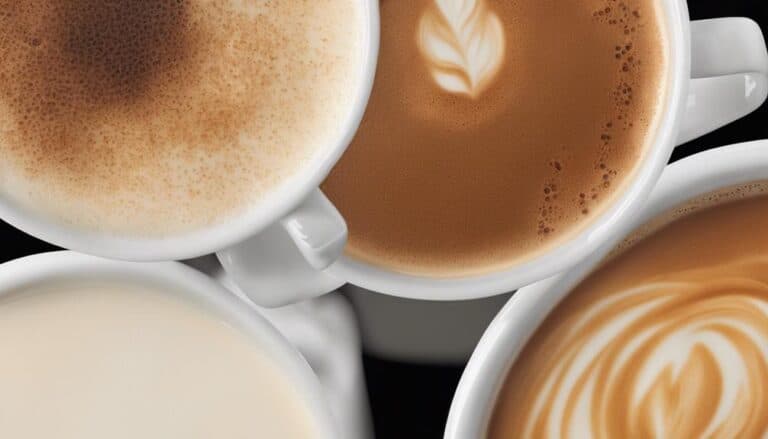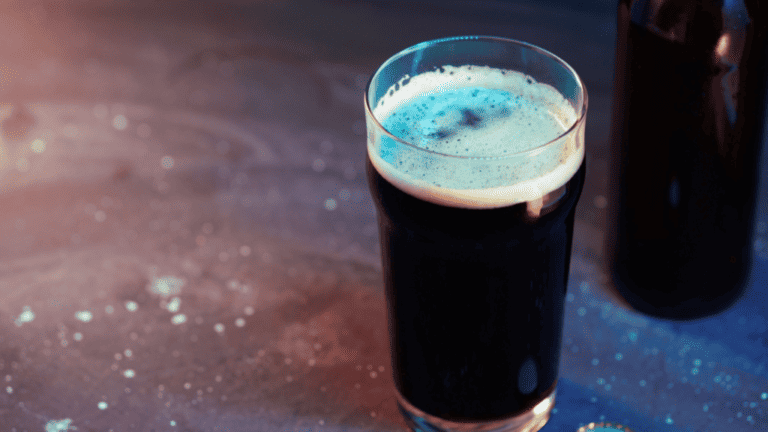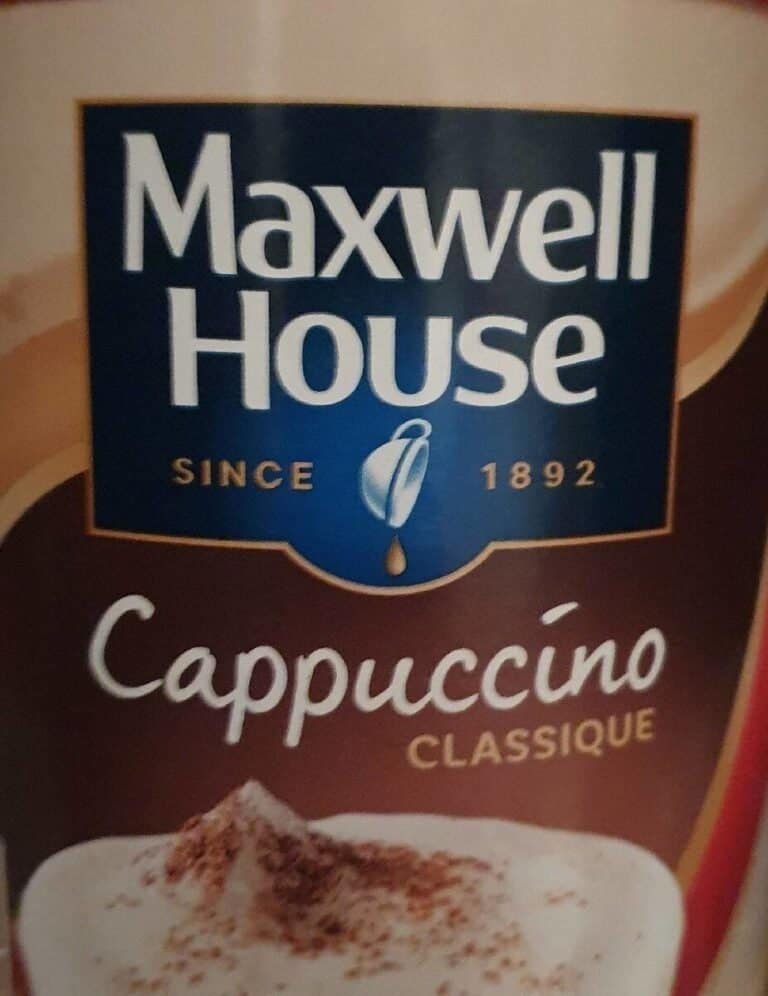The Key Differences Between Cappuccino and Latte: A Complete Comparison
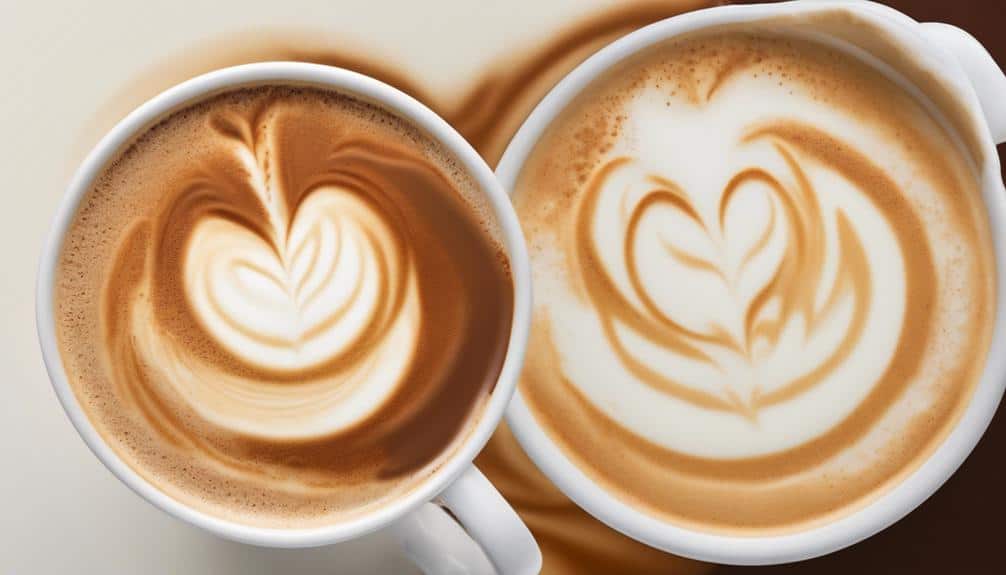
When it comes to coffee culture, the distinction between a cappuccino and a latte is akin to deciphering subtle nuances in a piece of art – it requires a discerning eye, or in this case, palate.
The velvety microfoam on a cappuccino versus the silky smoothness of a latte can set the stage for a captivating sensory experience.
But beyond the surface, there's a world of contrasts waiting to be explored, from the origins of these drinks to the intricate dance of flavors and textures.
Let's uncover the layers that make cappuccinos and lattes unique, inviting you to savor each sip with newfound appreciation.
Ingredients and Froth Ratio
When crafting a cappuccino or a latte, the distinction in ingredients and froth ratio is crucial for achieving the desired flavor and texture.
In a cappuccino, the traditional ratio of equal parts espresso, steamed milk, and frothed milk creates a harmonious balance. The frothed milk in a cappuccino is crucial, as it provides that thick, velvety foam layer on top which distinguishes a cappuccino from other espresso beverages. This froth ratio not only contributes to the aesthetic appeal but also enhances the overall espresso taste by creating a stronger coffee flavor profile.
On the other hand, a latte features a higher ratio of steamed milk to espresso, typically with 2/3 steamed milk and 1/3 espresso. This higher proportion of steamed milk results in a creamier texture and a milder coffee flavor compared to a cappuccino. The milk composition and froth in a latte play a significant role in creating a smoother, more delicate beverage that appeals to those who prefer a less intense coffee taste.
Preparation Techniques
Moving from the discussion of ingredients and froth ratio, we now shift our focus to the detailed preparation techniques involved in crafting a perfect cappuccino or latte.
- Frothing Milk: Frothing milk is a crucial step in preparing both cappuccinos and lattes. For a cappuccino, the milk is frothed vigorously to create a thick, creamy foam that sits on top of the espresso. In contrast, a latte requires a lighter froth to achieve a smoother texture.
- Pulling Espresso Shots: The quality of the espresso plays a significant role in the final taste of both drinks. When preparing a cappuccino, a strong and robust espresso shot is pulled to stand out against the creamy milk and foam layers. For a latte, a milder espresso shot is used to create a more balanced flavor profile.
- Layering Technique: The way the ingredients are layered in the cup impacts the overall taste and presentation. Cappuccinos are traditionally prepared by pouring steamed milk first, followed by the espresso, and topped with a thick layer of frothed milk foam. On the other hand, lattes are crafted by layering espresso, steamed milk, and a light layer of milk foam on top, resulting in a more blended taste.
Taste Profiles and Textures

Exploring the taste profiles and textures of cappuccinos and lattes reveals distinct characteristics that cater to varying coffee preferences.
Cappuccinos boast a bolder taste and a fluffier texture due to the generous amount of foam added during preparation, providing a more robust coffee experience favored by those seeking a stronger flavor.
On the other hand, lattes offer a milder flavor and a smoother texture closer to regular coffee, making them a go-to choice for individuals desiring a gentler coffee experience.
Both beverages deliver a potent caffeine kick owing to the concentrated espresso base, ensuring a satisfying energy boost.
Lattes stand out for their versatility in flavor customization, with options like vanilla, mocha, or caramel, allowing for a personalized touch to suit diverse taste preferences.
The contrast in taste profiles and textures between cappuccinos and lattes plays a pivotal role in influencing individuals' preferences when selecting between the two drinks.
Historical Origins
Originating in Italy, the cappuccino's name pays homage to the habits worn by Capuchin friars. The history of cappuccino and latte is rich and diverse, spanning continents and centuries. Here are three key points to consider:
- Italian Roots: Cappuccino, with its bold espresso base, steamed milk, and frothy milk foam, has its origins deeply embedded in Italian coffee culture. The drink's name is a nod to the Capuchin friars and their distinctive brown robes, which the drink's color is said to resemble.
- American Innovation: On the other hand, the latte has American origins, with its name derived from the Italian word for milk. William Dean Howells, in an essay dating back to 1867, referenced what could be considered one of the first mentions of a caffe latte. It was later popularized by Lino Meiorin in Berkeley, California.
- Global Popularity: While cappuccinos gained popularity in cafes and restaurants in the 1950s, lattes became a favorite in America, reflecting the global evolution of coffee preferences.
Modern Variations and Trends
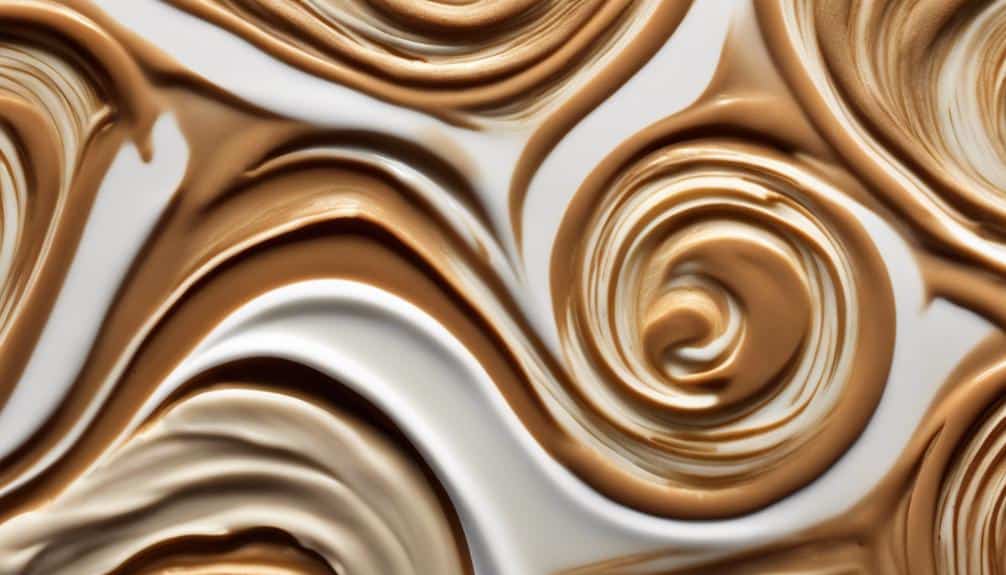
What're the latest trends in modern variations of lattes, and how do they reflect evolving consumer preferences and tastes in the coffee industry?
Modern variations of lattes have seen a surge in popularity due to their innovative and customizable nature. Flavored lattes, such as vanilla, hazelnut, and caramel, cater to diverse taste preferences, appealing to a wide range of consumers. Additionally, alternative lattes made with matcha, mate, or tea offer unique and non-traditional coffee experiences, attracting those seeking something different.
Chai lattes, with their blend of black tea and spices, provide a less caffeinated yet flavorful option for those looking for a distinctive taste profile. The ability to offer such diverse options like mocha, pumpkin spice, and chai showcases the adaptability of lattes to different seasonal offerings and consumer demands.
With an array of unique flavors and customizable choices, lattes continue to be at the forefront of the coffee industry's trends, meeting the evolving preferences of coffee enthusiasts worldwide.
Conclusion
In conclusion, while both cappuccinos and lattes are beloved espresso-based drinks, their key differences lie in the ratio of ingredients, preparation techniques, taste profiles, and historical origins.
Understanding these distinctions allows coffee enthusiasts to appreciate the unique characteristics of each beverage and choose based on their preferences. Whether you prefer the boldness of a cappuccino or the creaminess of a latte, both drinks offer a delightful experience that can be enjoyed in various modern variations and trends.


